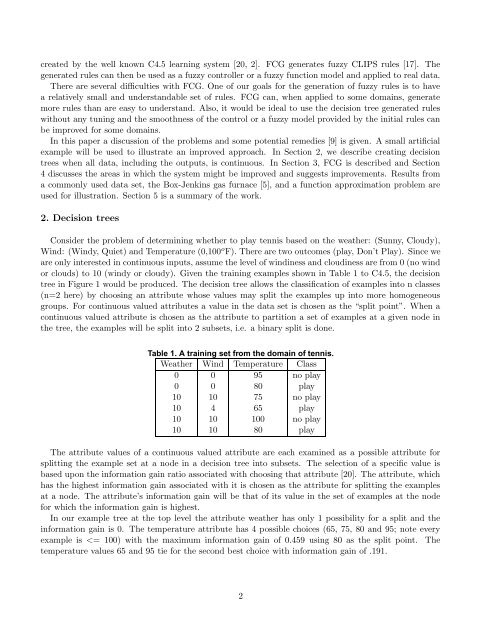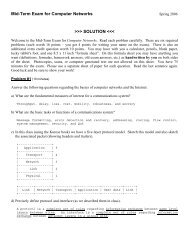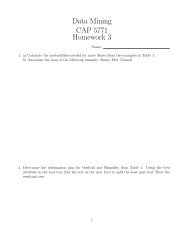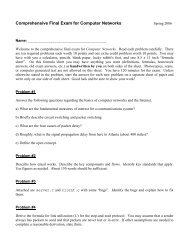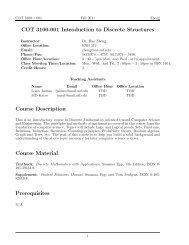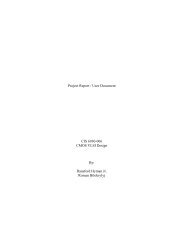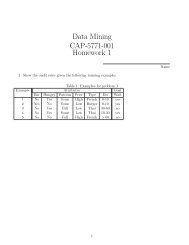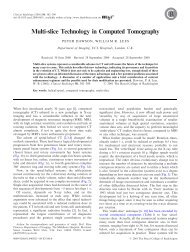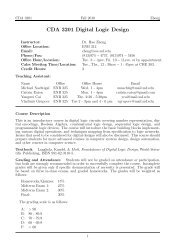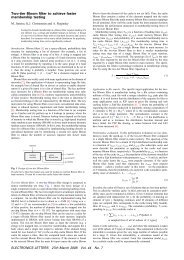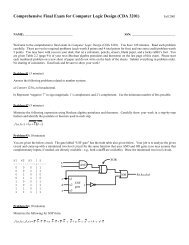The Generation of Fuzzy Rules from Decision Trees - Department of ...
The Generation of Fuzzy Rules from Decision Trees - Department of ...
The Generation of Fuzzy Rules from Decision Trees - Department of ...
You also want an ePaper? Increase the reach of your titles
YUMPU automatically turns print PDFs into web optimized ePapers that Google loves.
created by the well known C4.5 learning system [20, 2]. FCG generates fuzzy CLIPS rules [17]. <strong>The</strong>generated rules can then be used as a fuzzy controller or a fuzzy function model and applied to real data.<strong>The</strong>re are several difficulties with FCG. One <strong>of</strong> our goals for the generation <strong>of</strong> fuzzy rules is to havea relatively small and understandable set <strong>of</strong> rules. FCG can, when applied to some domains, generatemore rules than are easy to understand. Also, it would be ideal to use the decision tree generated ruleswithout any tuning and the smoothness <strong>of</strong> the control or a fuzzy model provided by the initial rules canbe improved for some domains.In this paper a discussion <strong>of</strong> the problems and some potential remedies [9] is given. A small artificialexample will be used to illustrate an improved approach. In Section 2, we describe creating decisiontrees when all data, including the outputs, is continuous. In Section 3, FCG is described and Section4 discusses the areas in which the system might be improved and suggests improvements. Results <strong>from</strong>a commonly used data set, the Box-Jenkins gas furnace [5], and a function approximation problem areused for illustration. Section 5 is a summary <strong>of</strong> the work.2. <strong>Decision</strong> treesConsider the problem <strong>of</strong> determining whether to play tennis based on the weather: (Sunny, Cloudy),Wind: (Windy, Quiet) and Temperature (0,100 o F). <strong>The</strong>re are two outcomes (play, Don’t Play). Since weare only interested in continuous inputs, assume the level <strong>of</strong> windiness and cloudiness are <strong>from</strong> 0 (no windor clouds) to 10 (windy or cloudy). Given the training examples shown in Table 1 to C4.5, the decisiontree in Figure 1 would be produced. <strong>The</strong> decision tree allows the classification <strong>of</strong> examples into n classes(n=2 here) by choosing an attribute whose values may split the examples up into more homogeneousgroups. For continuous valued attributes a value in the data set is chosen as the “split point”. When acontinuous valued attribute is chosen as the attribute to partition a set <strong>of</strong> examples at a given node inthe tree, the examples will be split into 2 subsets, i.e. a binary split is done.Table 1. A training set <strong>from</strong> the domain <strong>of</strong> tennis.Weather Wind Temperature Class0 0 95 no play0 0 80 play10 10 75 no play10 4 65 play10 10 100 no play10 10 80 play<strong>The</strong> attribute values <strong>of</strong> a continuous valued attribute are each examined as a possible attribute forsplitting the example set at a node in a decision tree into subsets. <strong>The</strong> selection <strong>of</strong> a specific value isbased upon the information gain ratio associated with choosing that attribute [20]. <strong>The</strong> attribute, whichhas the highest information gain associated with it is chosen as the attribute for splitting the examplesat a node. <strong>The</strong> attribute’s information gain will be that <strong>of</strong> its value in the set <strong>of</strong> examples at the nodefor which the information gain is highest.In our example tree at the top level the attribute weather has only 1 possibility for a split and theinformation gain is 0. <strong>The</strong> temperature attribute has 4 possible choices (65, 75, 80 and 95; note everyexample is


